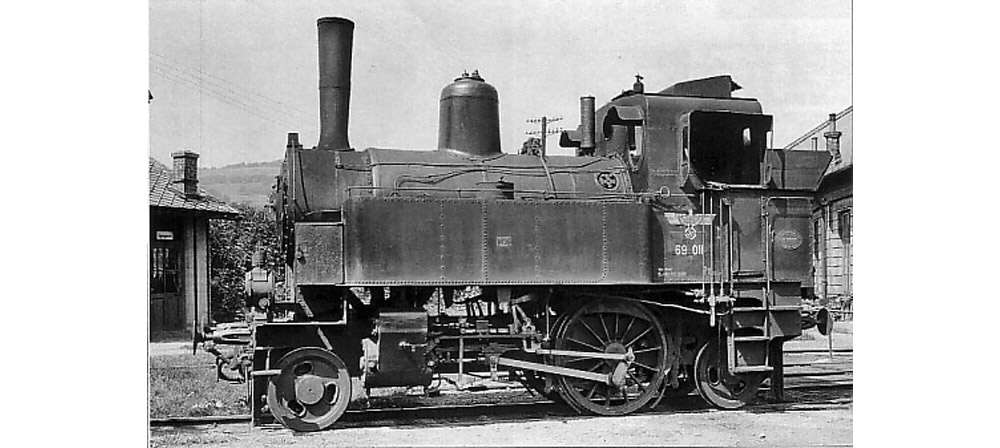



Country
Year
Class
Satured steam 2 cylinder
2-2-2

The Austro-Hungarian Empire has always had a propensity for multi-ethnicity and this also applied to steam locomotives. This is evident in the variety of forms and solutions adopted by the various manufacturers scattered in the four corners of the empire.
Next to locomotives with elegant lines and based on solid projects, to essential and functional technical solutions, we also find Pindaric flights of little economic importance, but of great interest for the enthusiast, always looking for curiosity and willing to recognize the originality of a project without asking excessive questions about the real technical value of the solutions adopted.
Finding news of this Br 69, of which at least 11 examples were built, has been one of the most exciting episodes of my career as a scholar of the esoteric railway.
This 1' A 1', built to pull very light trains on lines with low gradient and possibly in areas with little tourism, is a clear example of what I said above: born as 1' A, with only 1 driving axle and only the front load-bearing axle, it was modified in its final form (as it appears in the photo of Bellingrodt) to allow it to face the launch saddles with the addition of a balancing rear load-bearing axle. In fact the prototype had to be put back on the rails several times because of the unbalance on the rear.
The addition of the second load-bearing axle made it possible to increase the stocks of coal (previously it was customary for the stokers to arrive with a few kilograms of coal in their saddle, which considerably increased the range of action of the locomotive), to face even considerable slopes without the danger of overturning and to paint, as per regulation, the eagle with swastika on the cab without having to go to dirty the water tanks.
Contrary to what happened to many other railways of the central empires, these locomotives did not attract the attention of those in charge of accounting for war damage in execution of the peace treaties after the Second World War. It seems that for this reason these locomotives were nicknamed "E lass's".
Their career after the war was however very short. The birth of the Federal Republic of Austria and the investments in the tourism sector led to the rapid withdrawal of these locomotives from service. In fact, they did not fit in well with the masterly work of landscape furnishing that made Austria one of the favorite destinations for winter and summer tourism of many Europeans.
In this sense I have had news, unfortunately unconfirmed, of a petition from the hoteliers of Bad Ischl that begins with "Bitte, kein 69..." (please, no 69...) dated February 1946 upon news that one of these machines would be moved to that station for shunting service.
With the reparation of the 52 wars the necessity of keeping these obrobr... pardon, these locomotives, so a directive of the Direction of Movement and Scrapping Catorci of the reconstituted OeBB put these locomotives out of service and decreed their transformation into more functional strudel forks in 1947.
*** Translated with www.DeepL.com/Translator (free version) ***
